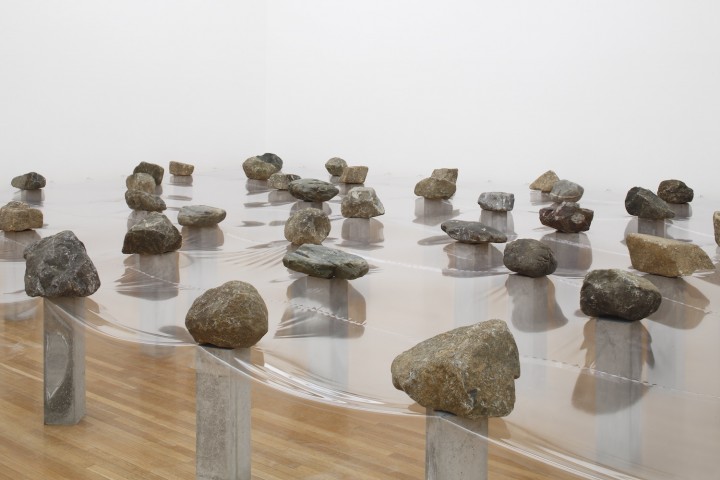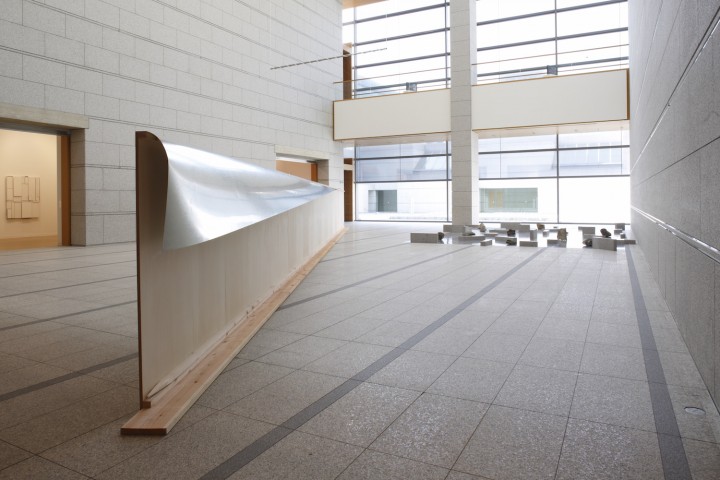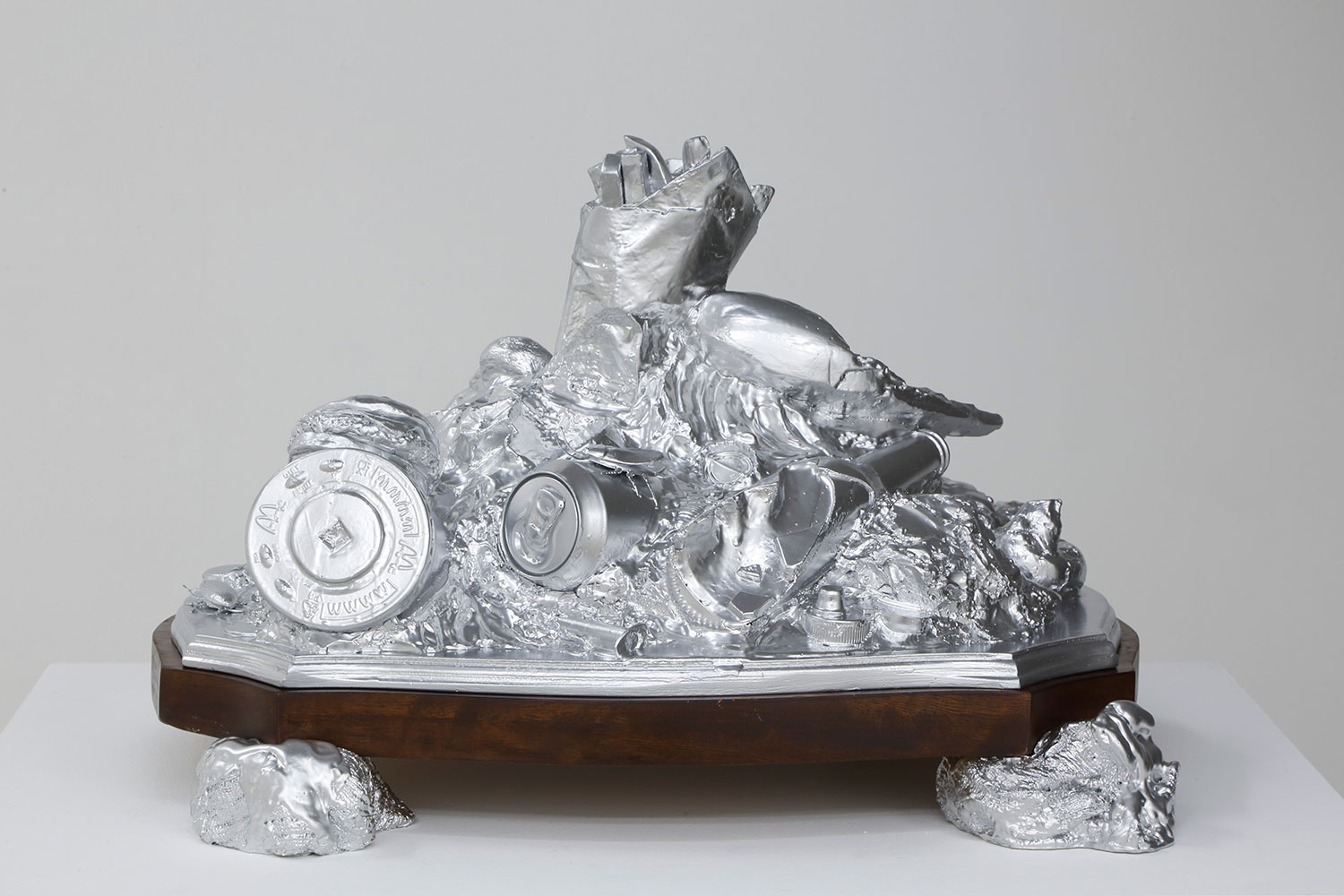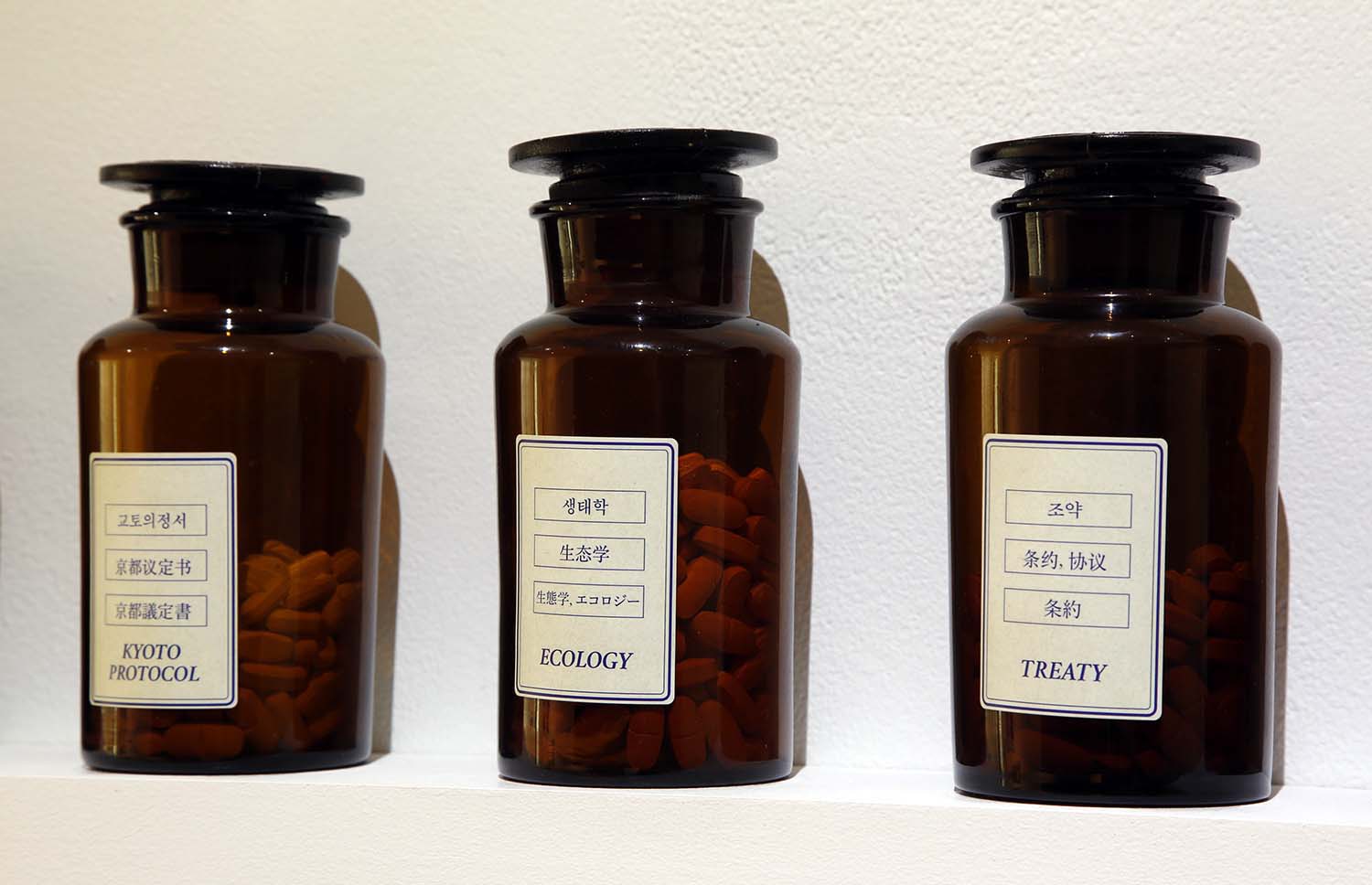Suppose the art of the Gutai group corresponded to Informel or Abstract Expressionism; works by the Mono-ha school of artists might be Japan’s answer to Minimalism or Arte Povera. Among the protagonists of Mono-ha, Lee Ufan makes the best case for such an analogy. But Kishio Suga is somewhat different. This solo show, featuring Suga’s major installations that were first exhibited in the 1970s or ’80s and later remade for exhibitions in Japan and abroad, conveys this idiosyncratic difference.
Law of Multitude (1975–2015) is an array of stones each set on a waist-high vertical concrete block; a single transparent vinyl sheet is precariously stretched horizontally between the stones and blocks. Left-Behind Situation (1972–2015) astonishes the viewer with its spectacular fragility. Wire ropes extend between the walls, and found wooden pieces are acrobatically placed on the intersections of the ropes, forming clumsy constellations that float above the floor. The largest work, Spatial Boundary: Along the Distance (1987–2015), is puzzling. A plywood wall divides — in a way reminiscent of Richard Serra’s 1981 Tilted Arc — the museum’s atrium diagonally. An eave of a galvanized iron plate dangles from the top, and a trapeze of a pipe and rope hovers over the wall. In Condition of Situated Units (1975/2015), dead branches are laid all over the floor, with metal rods standing among them. The rods can only stand thanks to the branches to which they are tied with wire.
Unlike the more conceptual work of his fellow Mono-ha artists — the stern simplicity of Minimalism or the dry radicalism of Arte Povera — Suga’s installations look replete with metaphors and omens, simmering with references to the real world. His comments on the exhibition’s title, “Situated Latency,” are also suggestive: “Mono [things] is always ‘imminent.’ … To see the hidden reality of mono is to understand the structure of the world.” If, four decades ago, Suga was already conscious of the imminence of the touchy situations in the world today, his art is a prophecy, far beyond a mere juxtaposition of things.




